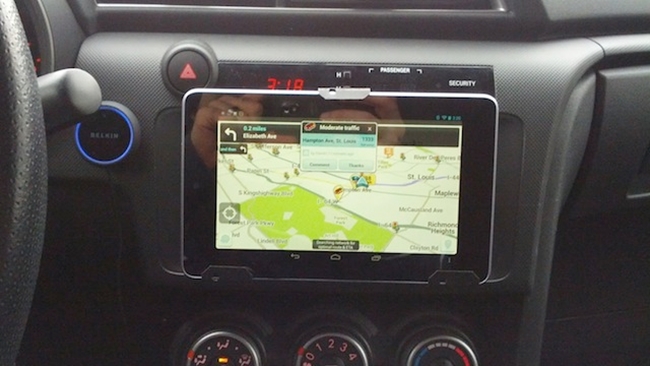A new AI model built for the global majority Microsoft has announced Project Gecko, a research initiative designed to close the performance gap between…
5 DIY hacks that let you fit high tech gadgets into ordinary cars

If you’re on this site, it’s fairly safe to say that you love cars and tech (if not, how did you get here? Please tell us, if only to satisfy our curiosity). Unfortunately, the cars currently crammed with the most exciting tech aren’t exactly within the reach of most people.
Thanks to the internet though, we now know that there’s no piece of car tech that can’t be improvised with a few pieces of tape, a couple of lengths of wire, a soldering iron and some good intentions.
Sure some of the hacks we’ve found might not be that pretty, but who cares about pretty when you’ve got an awesome HUD/tablet mount/smartphone dock for a fraction of the cost of a new car?
We should however be clear that we’re by no means guaranteeing you’ll succeed if you try any of these hacks, but we’re not going to stop you either. All we’re saying is that if you miss a couple of steps and end up electrocuting yourself…or doing so much damage to your car that you have to buy a new one any way.
1. HUD
When we wrote our article about alternative ways of getting the head up display (HUD) experience without shelling out for a new car, this was probably our favourite entry.
Using a components such as an Arduino Uno, an OBD-II cable and a 7-Segment Display, the solution is far from simple and elegant, but you can’t help admire someone who saw what car makers and specialist aftermarket manufacturers were doing in the space and thought “I bet I could build one of those myself”. Here are the results:
Anyone who struggles with reversing into a parking should be forever grateful for the invention of the backup camera (unless they enjoy handing over large wads of cash to panlebeaters). Unfortunately not everyone with a parking problem can afford the kind of car that comes standard with that particular piece of technology.
Fortunately, it seems that anyone with a Raspberry Pi, a security camera and a little electronics know-how can install one in their car. Well, that’s the theory anyway. The version demonstrated below appears to be on a dining room table, and very much not in a car.
3. Tablet mount

Image: Lifehacker.
When Volvo revealed its “human machine interface” last week, the world pretty much sat up and said: “that’s a tablet stuck the car’s centre console!”. Hardly a great leap forward then. It’s pretty much the same thing car makers have been doing for a few years now and is therefore ideal fodder for the DIY car hacker.
The hack pictured above seems pretty straightforward, but it only really seems viable if you have a seven-inch tablet. If you’ve got something bigger and like extreme engineering projects, there are options out there for you too.
4. Turn your ashtray into a smartphone dock
Ashtrays have already disappeared in a fair few modern cars to make way for some or other form of technology. It makes sense too. Anyone buying a new car is far more likely to have a decent smartphone than a pack-a-day habit.
As consumer tech’s become more freely available over the years and smoking’s become less socially acceptable, the same has pretty much become true of people driving older cars.
There are a couple of ashtray to smartphone docking solutions, but we have a soft spot for the Jalopnik hack linked to in the item heading.
Mostly that’s because the car the author performed the hack on comes from 1973. Back then, we were only starting to imagine a future with personal computers, never mind a powerful computing machine capable of fitting in our pockets. We also have to laud it for not just being a power dock for the iPhone but also plugging into the car’s audio system.

Image: Lifehacker.
The thing about parking accidents is that they tend not to hurt anyone physically, but are perfectly capable of doing serious damage to your bank account. It’s hardly surprising then that manufacturers started putting parking technology into their vehicles as soon as possible.
Before it became economically viable to stick cameras on every corner of a car, the manufacturers had to rely on sonic proximity sensors.
According to Lifehacker, all you need is a ping sonic range finder, Arduino, a buzzer, and a few wires.

